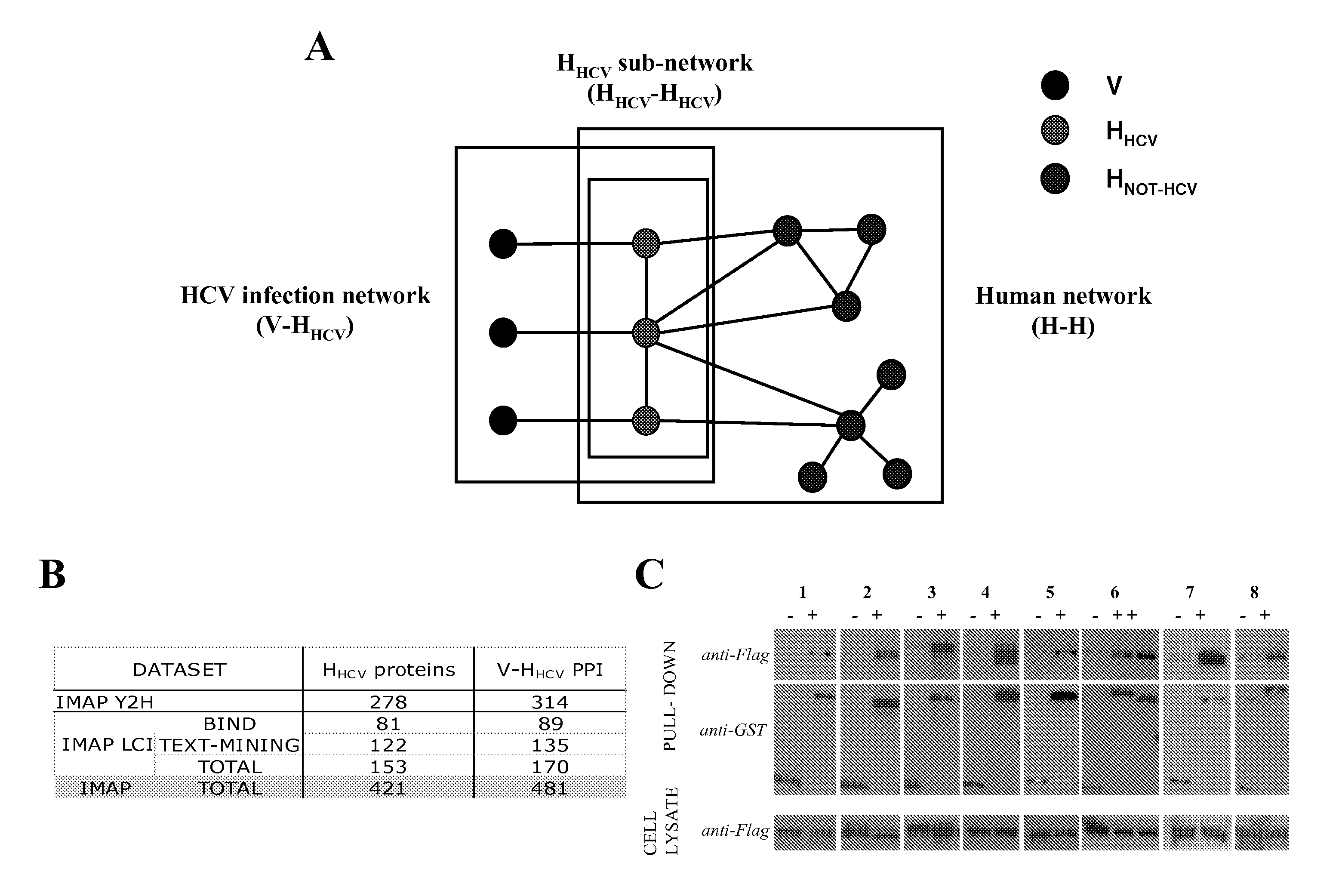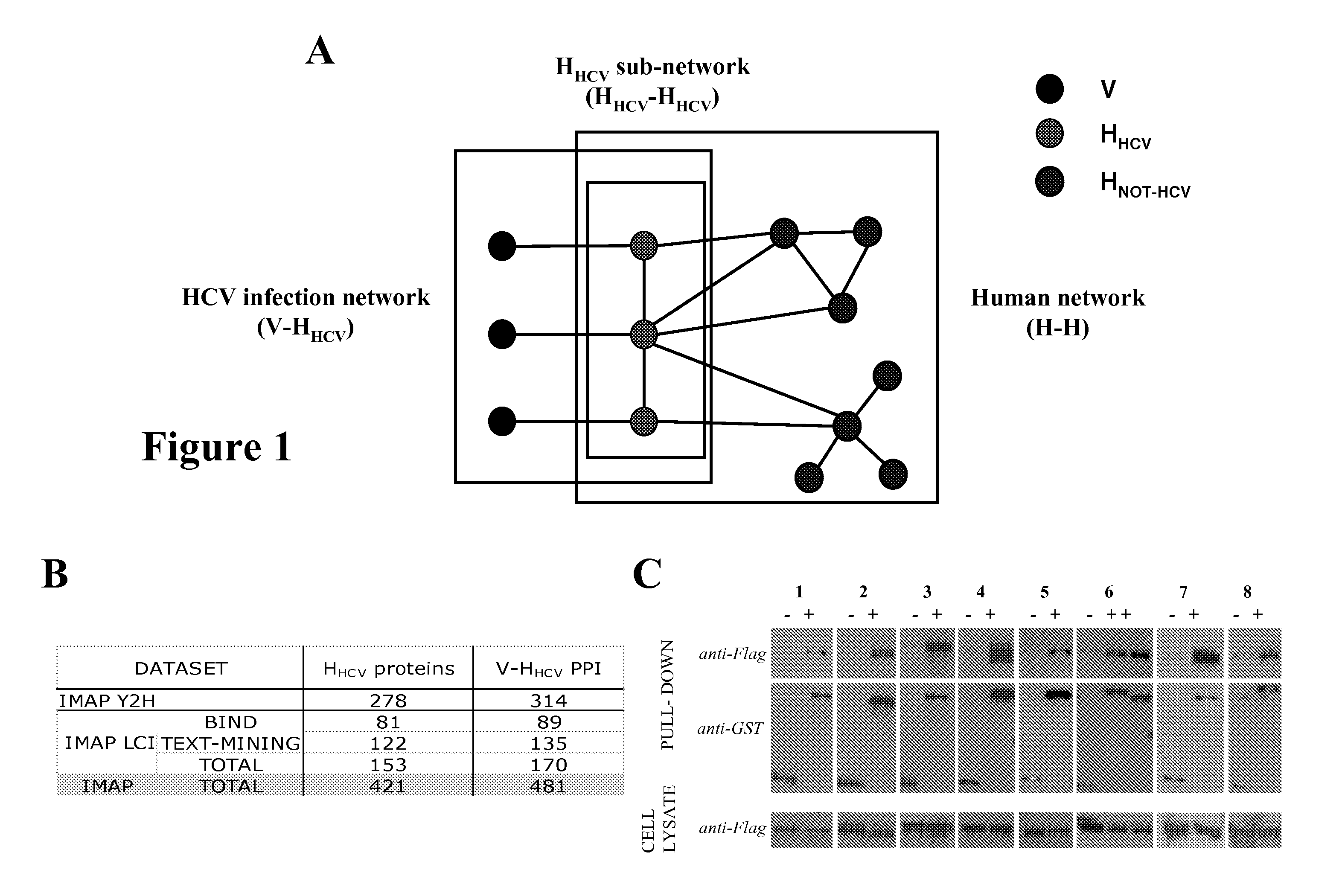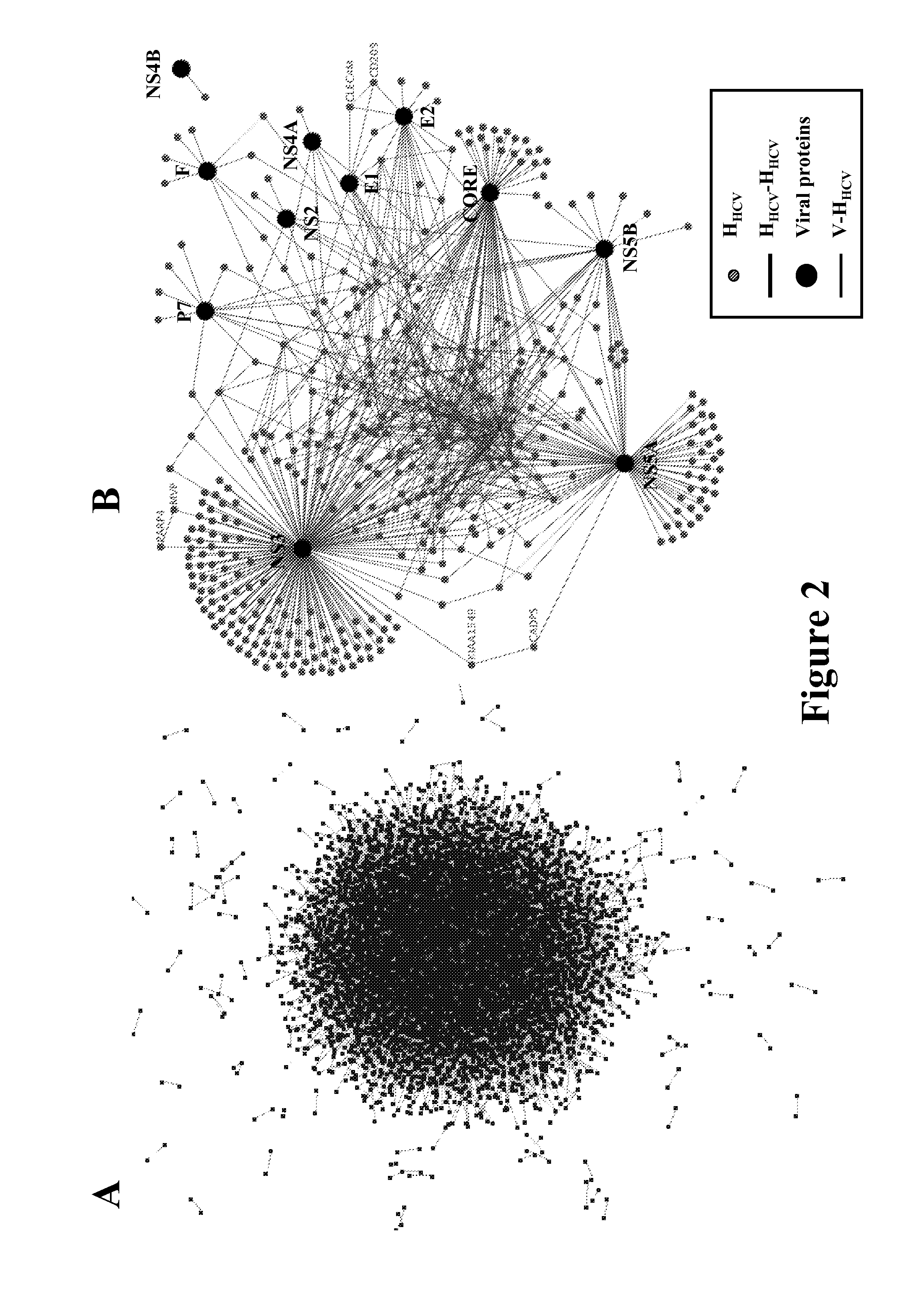Methods for Screening Compounds for Treating and/or Preventing an Hepatitis C Virus Infection
a technology of hepatitis c virus and compound, which is applied in the field of screening compounds for treating and/or preventing an hepatitis c virus infection, can solve the problems of unfulfilled documentation of interactions between human and viral proteins, high risk of developing cirrhosis and hepatocarcinoma in term infected patients, and low understanding of the molecular basis of hcv pathology
- Summary
- Abstract
- Description
- Claims
- Application Information
AI Technical Summary
Benefits of technology
Problems solved by technology
Method used
Image
Examples
example 1
Summary
[0142]A proteome-wide mapping of interactions between hepatitis C virus and human proteins was performed to provide a comprehensive view of the cellular infection. A total of 314 protein-protein interactions between HCV and human proteins was identified by yeast two-hybrid and 170 by literature mining. Integration of this dataset into a reconstructed human interactome showed that cellular proteins interacting with HCV are enriched in highly central and interconnected proteins. A global analysis based on functional annotation highlighted the enrichment of cellular pathways targeted by HCV. A network of proteins associated with frequent clinical disorders of chronically infected patients was constructed by connecting the insulin, Jak / STAT and TGFβ pathways with cellular proteins targeted by HCV. CORE protein appeared as a major perturbator of this network. Focal adhesion was identified as a new function affected by HCV, mainly by NS3 and NS5A proteins.
Material & Methods:
Constru...
example 2
[0191]Hepatitis C virus (HCV) infected patients with high serum levels of bile acids (BAs) usually fail to respond to antiviral therapy. The role of BAs on HCV RNA replication was thus assessed. BAs, especially chenodeoxycholate and deoxycholate, up-regulated HCV RNA replication by more than tenfold. Only free but not conjugated BAs were active, suggesting that their effect was mediated by a nuclear receptor. Only farnesoid X receptor (FXR) ligands stimulated HCV replication while FXR silencing and FXR antagonism by guggulsterone blocked the up-regulation induced by BAs. Furthermore, guggulsterone alone inhibited basal level of HCV replication by tenfold. Modulation of HCV replication by FXR ligands occurred in the same proportion in presence or absence of type I interferon, suggesting a mechanism of action independent of this control of viral replication. Thus, exposure to BAs increases HCV replication by a novel mechanism involving activation of the nuclear receptor FXR.
[0192]This...
PUM
| Property | Measurement | Unit |
|---|---|---|
| pH | aaaaa | aaaaa |
| temperature | aaaaa | aaaaa |
| resistance | aaaaa | aaaaa |
Abstract
Description
Claims
Application Information
 Login to View More
Login to View More - R&D
- Intellectual Property
- Life Sciences
- Materials
- Tech Scout
- Unparalleled Data Quality
- Higher Quality Content
- 60% Fewer Hallucinations
Browse by: Latest US Patents, China's latest patents, Technical Efficacy Thesaurus, Application Domain, Technology Topic, Popular Technical Reports.
© 2025 PatSnap. All rights reserved.Legal|Privacy policy|Modern Slavery Act Transparency Statement|Sitemap|About US| Contact US: help@patsnap.com



